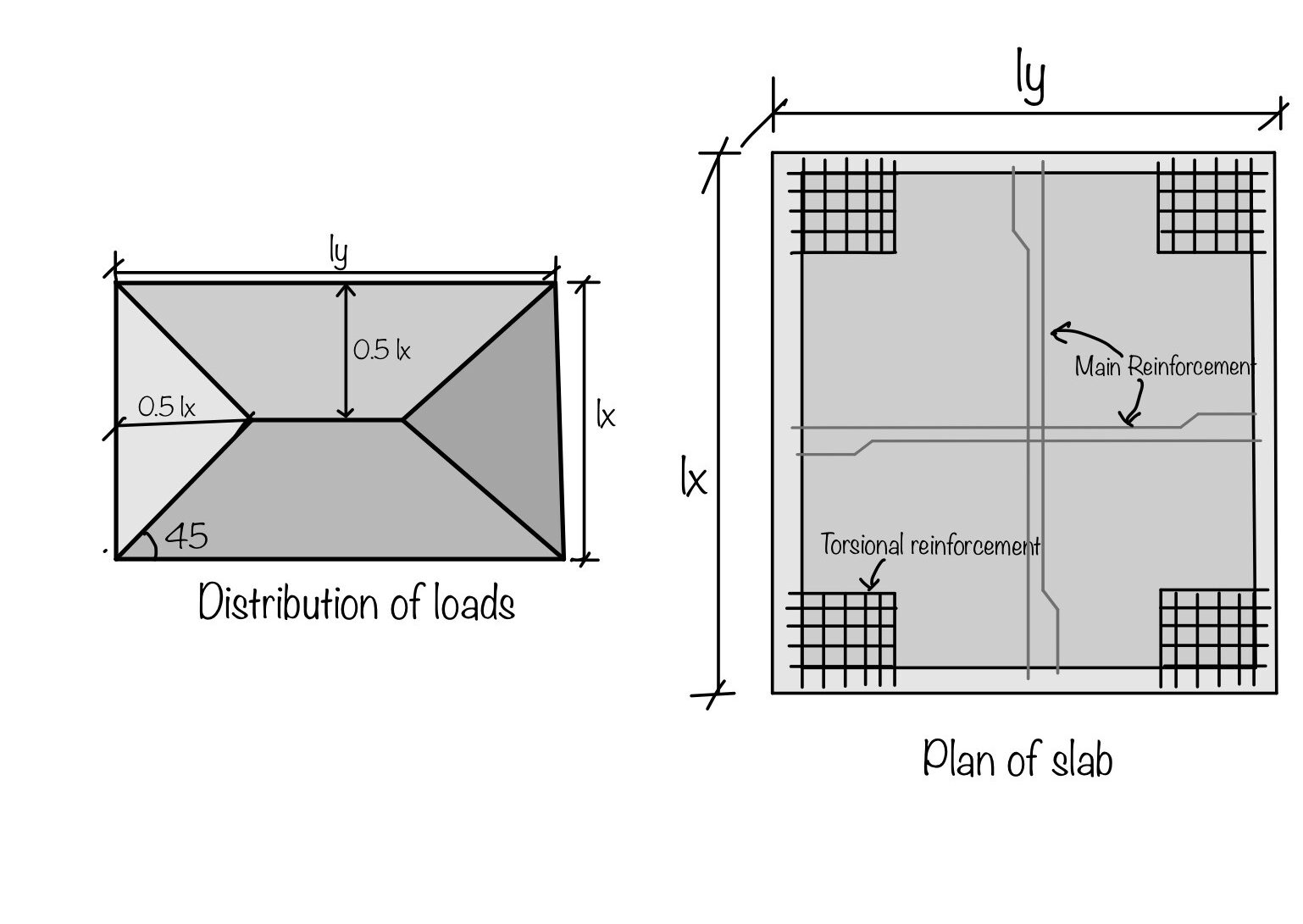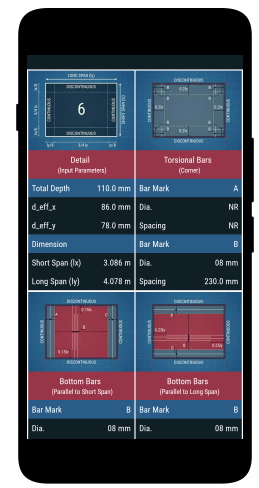Designing a two-way slab according to the guidelines set forth in IS 456:2000 is a crucial skill for civil engineers and aspiring students in the field of structural engineering. Two-way slabs play a significant role in constructing safe and efficient floors, roofs, and other horizontal surfaces.

In present scenario it is very easy to design slab. As in most of the cases we use some third party commercial software to design the structure. Even then I believe for a civil engineer it is very much important to be aware about the different steps involved in designing the two way slab as per the IS specification. By understanding these sequential stages, students will gain valuable insights into the fundamental principles of slab design, reinforcing their knowledge of load distribution, material properties, and safety considerations.
You can check this post to know about two way slab.
Determine the effective span of the slab
- Assume an effective depth (d) on the basis of span to effective depth ratio (Table 1).
- Then compute the value of overall depth (D).
- Overall depth D = d + clear cover
- Clear cover depends on the exposure condition (for mild exposure, clear cover = 20 mm and for moderate exposure, clear cover = 30 mm ).
- Effective span (l) l = lx + width of support or lx + d —– A lesser of these two
| Type of slab | For Fe250 | For Fe415 |
| Continuous | lx/40 | lx/32 |
| Simply supported | lx/35 | lx/28 |
Analysis – Calculate the moment
- Consider the various loads due to
- Self weight
- Dead Load
- Live load
- Calculate the total load and factored load (1.5 * Total load)
- Calculate the bending moment
$$ M_{x} = \frac{W_{ux} \times l_x^2 }{8} $$
$$ M_{y} = \frac{W_{uy} \times l_y^2 }{8} $$
This formulas are generalized in the Indian standard code:
$$ M_{x} = \alpha_x \times w_x \times l_x^2 $$
$$ M_{y} = \alpha_y \times w_y \times l_y^2 $$
The value of αx and αy is given in Table 27 of the Indian standard code.
Check for concrete Depth from Bending Moment criteria:
In the case of a two-way slab, effective depths for reinforcement in short span and long span at mid – span differ by a bar diameter since long span steel is placed above short span steel.
The effective depth d0 is for outer layer of short span steel and effective depth di. is for inner layer of long span steel at mid-span. As far as support section is concerned, the effective depth is do only for both spans.
d0 = D – (nominal cover + $\phi$/2)
di = d0– $\phi$ for mid-span long-span steel.
It is sufficient to check that Mur.max > Mu.max ., for adequacy of concrete depth from bending moment criteria.
Determine the area of reinforcement ( Ast )
Design the reinforcement as per the bending moment. Follow the same procedure as followed in one way slab design.
Main steel calculated is provided only in the middle strips of width equal to 3/4th the slab width (at right angles to the span i.e. (3/4) Lx for short span steel and (3/4) Ly for long span steel). There will be no main steel parallel to the support in edge strip of width equal to 1 /8th of slab width (i.e. Ly/8 for short span steel and
Lx/8 for long span steel). In this edge strip, only distribution steel will be provided.
Check as per Indian Standards
The minimum reinforcement in each direction should not be less than
- 0.15% of the Ast for Fe-250 steel.
- 0.12% of the Ast for Fe-415 & Fe-500 steel.
The max. spacing of bars should not be more than
- 3d or 300 mm whichever is smaller for main steel.
- 5d or 450 mm whichever is smaller for distribution steel.
You can design the two way slab using our android application.
Conclusion
In conclusion, the efficient design of two-way slab demands following a step-by-step approach according to IS 456: 2000. The design process involves several key steps, including determining the load capacity calculating the effective span, and determining the depth of the slab.
In this post you have learned the following points:
- IS codes: Follow the guidelines of IS 456 : 2000 for an efficient design of two way slab.
- Design tool: Following these steps and using the appropriate design tools will result in a safe, reliable, and efficient two-way slab.
- Minimum bar: It should not be less than 0.15% of the Ast for Fe-250 steel and 0.12% of the Ast for Fe-415 & Fe-500 steel.
- Maximum bar: It should not be more than 3d or 300 mm for main steel and 5d or 450 mm for distribution steel.
Slab design
- RCC Slab Design is a free app for designing one way and two way reinforced concrete slab systems as per Indian Standards.
- RCC Design and detailing could be performed for ten different boundary conditions specified in IS456:2000
- Option to save the design projects in local storage.
- Detailed calculation steps presented for verification and validation.

This article was crafted by a group of experts at eigenplus to ensure it adheres to our strict quality standards. The individuals who contributed to this article are:
Author


